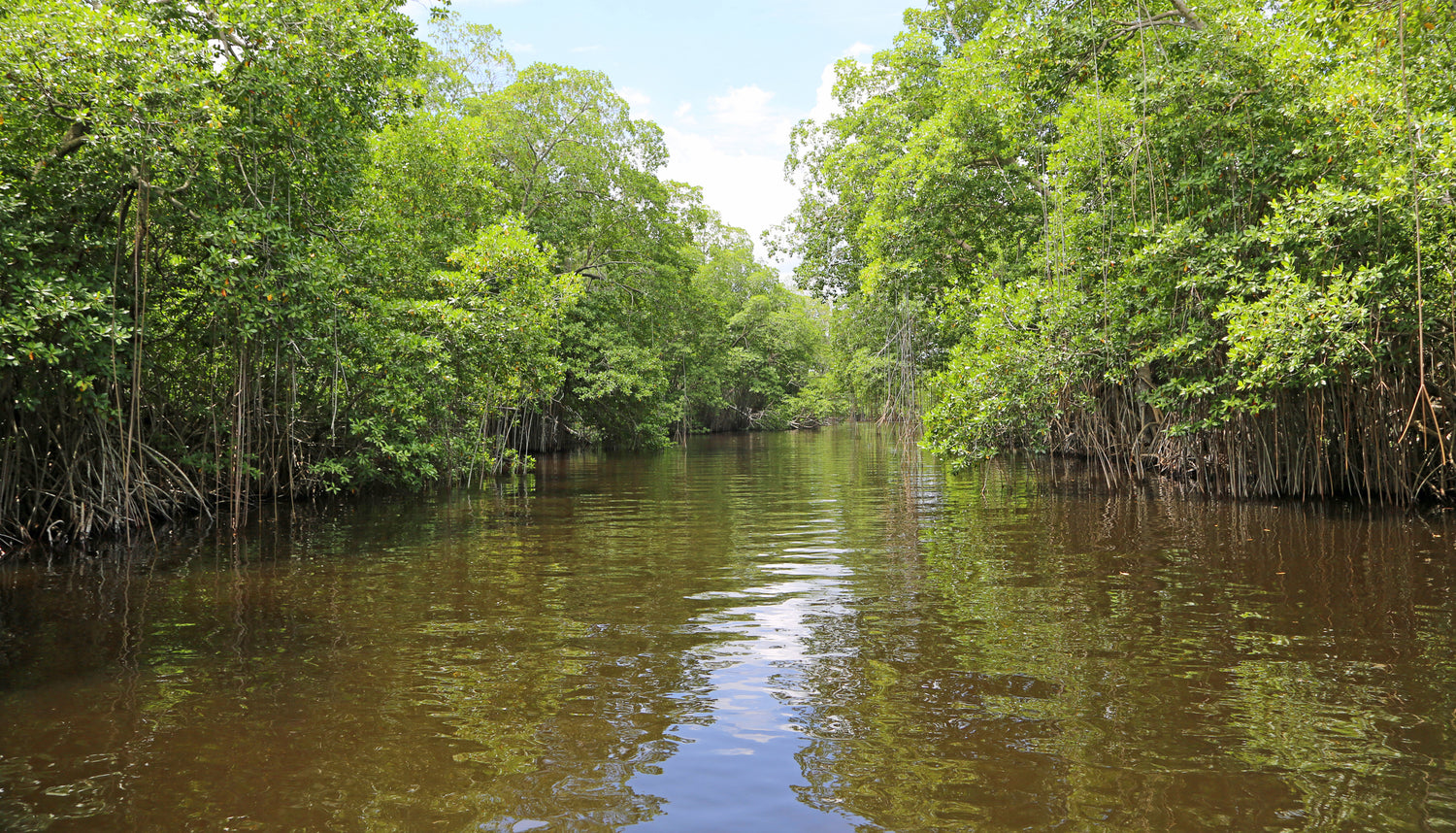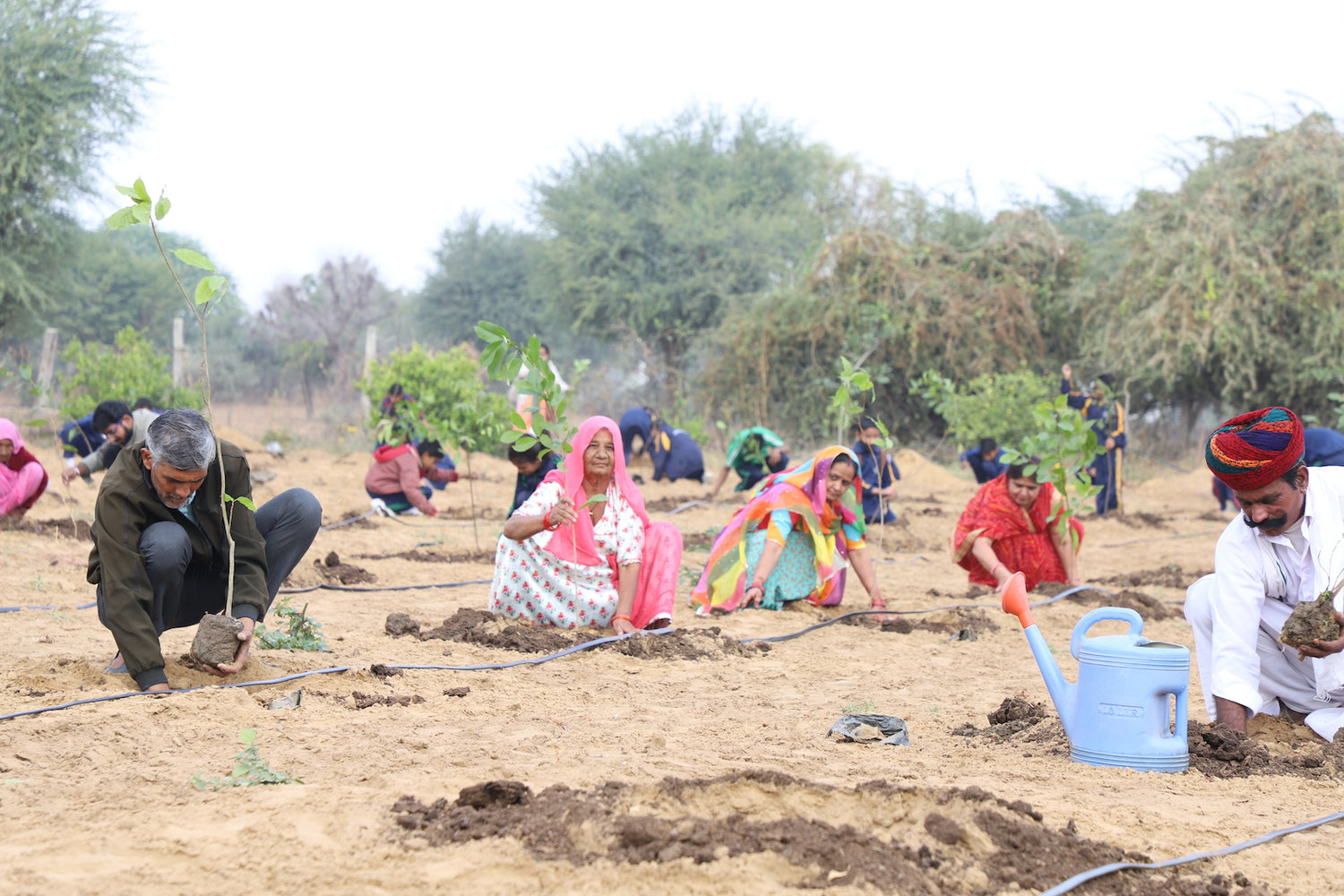Mangroves in Kolkata: The Gateway to the Majestic Sundarbans
Mangroves in Kolkata: The Gateway to the Majestic Sundarbans Kolkata, often referred to as the “City of Joy,” is also the northern gateway to the Sund Read more
Connect with us
-
👥 Corporates
If you are looking for:
- 🌲 Tree Plantation Events
- 📊 CSR Projects
📧 corporate@growbilliontrees.com
📞 +91 9699723523
💬 +91 9325931304 WhatsApp (Only)
🕒 Mon - Sat | 10am - 7pm IST
-
🧩 Tree Plantation NGOs
If you are looking for:
- 💰 Financial Assistance
- 🤝 Operational Support
📧 support@growbilliontrees.com
📞 +91 9699723523
💬 +91 9325931304 WhatsApp (Only)
🕒 Mon - Sat | 10am - 7pm IST
-
🌼 Individuals
If you are looking for:
- 👥 Group Tree Plantation Drive
- 🌳 Bulk Tree Plantation
📞 +91 9699723523
💬 +91 9325931304 WhatsApp (Only)
🕒 Mon - Sat | 10am - 7pm IST
Trending
Trees for Corporates
Mangroves in Kolkata: The Gateway to the Majestic Sundarbans
Mangroves in Kolkata: The Gateway to the Majestic Sundarbans
Kolkata, often referred to as the “City of Joy,” is also the northern gateway to the Sundarbans, the largest mangrove forest in the world.
Located at the mouth of the Ganga-Brahmaputra-Meghna delta, the mangroves in and around Kolkata play a vital role in protecting the city from natural disasters, supporting biodiversity, and combating climate change.
While the urban sprawl of Kolkata itself has limited mangrove cover, its proximity to the Sundarbans makes it a crucial hub for mangrove conservation efforts.
Historical and Cultural Significance
The Sundarbans, a UNESCO World Heritage Site, has been deeply intertwined with the culture and livelihood of communities in and around Kolkata for centuries.
The name "Sundarbans" derives from the Sundari tree (Heritiera fomes), a dominant species in the mangrove ecosystem.
Historically, the Sundarbans mangroves acted as natural barriers against tidal waves and storms, protecting the settlements of Kolkata and the surrounding areas. Over time, the forests have also been a source of fish, honey, and timber for local communities.
Ecological Importance
1. Flood and Cyclone Mitigation
Mangroves absorb the impact of tidal surges and cyclones, acting as Kolkata’s frontline defense against natural disasters. Events like Cyclone Amphan (2020) demonstrated the importance of these forests in reducing damage to urban and rural areas.
2. Carbon Sequestration
Mangroves store carbon at rates far exceeding most terrestrial forests. The Sundarbans mangroves play a critical role in offsetting greenhouse gas emissions and mitigating climate change effects for Kolkata and beyond.
3. Biodiversity Hotspot
The mangroves near Kolkata are home to a rich array of wildlife, including the elusive Royal Bengal tiger, saltwater crocodiles, and rare birds like the masked finfoot. This biodiversity not only supports the ecosystem but also attracts eco-tourists.
4. Supporting Livelihoods
For generations, local communities have relied on the mangroves for fishing, crab collection, and honey harvesting. These activities are intricately linked to the health of the mangrove ecosystems.
Fun Facts About Kolkata’s Mangroves
- Tiger Tales: The Sundarbans mangroves are the only mangrove forest in the world to host a significant tiger population.
- Sundari Trees: The Sundarbans are named after the Sundari tree, known for its high-quality timber and salt tolerance.
- Natural Air Purifiers: The mangroves around Kolkata act as nature’s filtration system, improving air and water quality.
Environmental Challenges
-
Urbanization and Deforestation The expansion of Kolkata and nearby towns has led to the clearing of mangroves, reducing their ability to protect against erosion and storms.
-
Rising Sea Levels Climate change has caused an increase in sea levels, threatening to submerge parts of the Sundarbans and endangering its mangrove cover.
-
Pollution Industrial waste, untreated sewage, and plastic pollution are significant threats to the health of mangrove ecosystems near Kolkata.
-
Salinity Changes Increasing salinity due to rising seas impacts the growth and regeneration of mangroves, especially species like the Sundari tree.
Grow Billion Trees: A Catalyst for Mangrove Conservation
Grow Billion Trees has been instrumental in mangrove restoration and conservation efforts near Kolkata and in the Sundarbans.
By engaging local communities, utilizing advanced technology, and collaborating with government bodies, the organization ensures the protection and regeneration of these vital ecosystems.
Collaborations
- Partnering with West Bengal Forest Department to execute large-scale mangrove restoration projects in degraded areas.
- Collaborating with NGOs and research institutions to study mangrove health and biodiversity.
Execution Strategies
- Establishing nurseries for native mangrove species like Avicennia marina and Rhizophora mucronata.
- Conducting plantation drives in vulnerable areas affected by cyclones and rising sea levels.
- Using drone technology and satellite imagery to monitor mangrove growth and ecosystem health.
Awareness and Advocacy
- Organizing workshops for schools and local communities to highlight the ecological and economic importance of mangroves.
- Promoting eco-tourism in the Sundarbans to raise awareness and generate funds for conservation.
- Running social media campaigns to educate the public about the role of mangroves in climate resilience and biodiversity conservation.
Key Achievements by Grow Billion Trees
- Post-Amphan Restoration: Grow Billion Trees has restored over 500 hectares of mangroves in areas devastated by Cyclone Amphan, providing long-term protection for nearby communities.
- Community-Led Nurseries: Local women’s groups have been trained to cultivate mangrove saplings, creating both ecological and economic benefits.
- Eco-Tourism Development: The organization supports sustainable tourism initiatives, such as guided mangrove walks and bird-watching tours, to promote conservation awareness.
Future Prospects
By 2030, Kolkata’s mangroves and the Sundarbans could set an example for global mangrove conservation.
Expanding mangrove cover, mitigating climate impacts, and fostering sustainable livelihoods are key goals. Increased public awareness and community involvement will play a pivotal role in ensuring the long-term success of these efforts.
Conclusion
The mangroves in and around Kolkata, as part of the Sundarbans, are invaluable to the region’s ecological, economic, and social well-being.
They protect against natural disasters, support biodiversity, and combat climate change, proving that these ecosystems are more than just forests—they are lifelines.
Grow Billion Trees is dedicated to preserving and expanding these mangroves through innovative strategies, community engagement, and long-term partnerships.
With collective action, Kolkata’s mangroves will continue to thrive as nature’s coastal shield and a gateway to the majestic Sundarbans.
Sundarbans Mangroves near Kolkata
These iconic mangroves, named after the Sundari tree, act as nature’s fortress, protecting Kolkata from floods and cyclones while hosting the majestic Royal Bengal tiger.
Mangroves and Cyclone Defense in Kolkata
During storms like Cyclone Amphan, mangroves absorbed tidal surges, proving they’re Kolkata’s unsung heroes in disaster management.
Biodiversity in Sundarbans Mangroves
From saltwater crocodiles to masked finfoot birds, these mangroves are a thriving biodiversity hotspot that balances nature’s delicacy and power.
Mangroves as Carbon Sinks
The Sundarbans mangroves store carbon at remarkable rates, making them Kolkata’s green guardians against climate change and global warming.
Threats to Mangroves near Kolkata
Urban sprawl, rising sea levels, and pollution are slowly gnawing away at these ecosystems, making conservation an urgent necessity.
Grow Billion Trees in Sundarbans
This initiative restores mangroves near Kolkata, protecting them from degradation while engaging communities for long-term sustainability.
Mangroves and Eco-Tourism near Kolkata
Guided tours and boat rides in the Sundarbans showcase mangroves’ natural beauty while raising awareness about their ecological importance.
Mangroves and Local Livelihoods
For fishing and honey-collecting communities, these mangroves are lifelines, balancing nature’s bounty with economic survival.
Mangroves and Water Filtration
Acting as nature’s filters, these mangroves trap sediments and improve water quality, ensuring a cleaner environment for Kolkata’s waterways.
Mangroves and Wildlife Conservation
By protecting habitats for species like the Royal Bengal tiger, these mangroves are critical for India’s wildlife preservation efforts.
Mangroves and Rising Sea Levels
Adapted to salty waters, Sundarbans mangroves stand tall against rising seas, showing nature’s resilience in the face of climate change.
Community Role in Mangrove Conservation
Local communities are key to protecting Sundarbans mangroves, working with initiatives like Grow Billion Trees to secure their future.
You may like
Corporate Plantations
FAQ
What are the mangroves near Kolkata?
These mangroves, part of the Sundarbans, are nature’s shield against cyclones and flooding, supporting biodiversity and livelihoods. Grow Billion Trees works to restore and protect these vital ecosystems.
Why are Kolkata’s mangroves important?
They mitigate floods, store carbon, and support marine and terrestrial life while shielding the city from natural disasters. Grow Billion Trees ensures their conservation for ecological balance.
How do mangroves protect against cyclones?
Mangroves absorb storm surges and reduce the impact of tidal waves, acting as Kolkata’s natural defense. Grow Billion Trees strengthens this protection through restoration efforts.
What wildlife thrives in Kolkata’s mangroves?
From Royal Bengal tigers to mudskippers and rare birds, these mangroves are biodiversity hotspots. Grow Billion Trees works to preserve these vibrant habitats.
How do mangroves support local livelihoods?
Fishing, crab collection, and honey harvesting depend on healthy mangroves. Grow Billion Trees restores these ecosystems to sustain both nature and communities.
What threats do Kolkata’s mangroves face?
Urbanization, pollution, and rising sea levels threaten these ecosystems. Grow Billion Trees addresses these issues with reforestation and community engagement projects.
What is Grow Billion Trees doing for Kolkata’s mangroves?
We plant mangroves, engage local communities, and use technology to monitor and restore these ecosystems, ensuring long-term sustainability.
How do Kolkata’s mangroves combat climate change?
Mangroves store carbon at impressive rates and buffer rising seas, making them climate heroes. Grow Billion Trees scales up restoration to amplify these benefits.
Why are Sundarbans mangroves unique?
These mangroves host a tiger population, protect against disasters, and support rich biodiversity. Grow Billion Trees ensures their unique role is preserved through conservation efforts.
How do mangroves benefit eco-tourism near Kolkata?
Eco-tours, including mangrove walks and boat rides, attract visitors while raising awareness about conservation. Grow Billion Trees promotes sustainable tourism models in the Sundarbans.
What makes the Sundari tree important to Kolkata’s mangroves?
The Sundari tree, a dominant mangrove species, provides timber and stabilizes coastlines. Grow Billion Trees ensures its regeneration in degraded mangrove areas.
Can communities help conserve Kolkata’s mangroves?
Absolutely! Local communities are crucial for protecting these ecosystems. Grow Billion Trees empowers them with training and resources for sustainable conservation practices.























